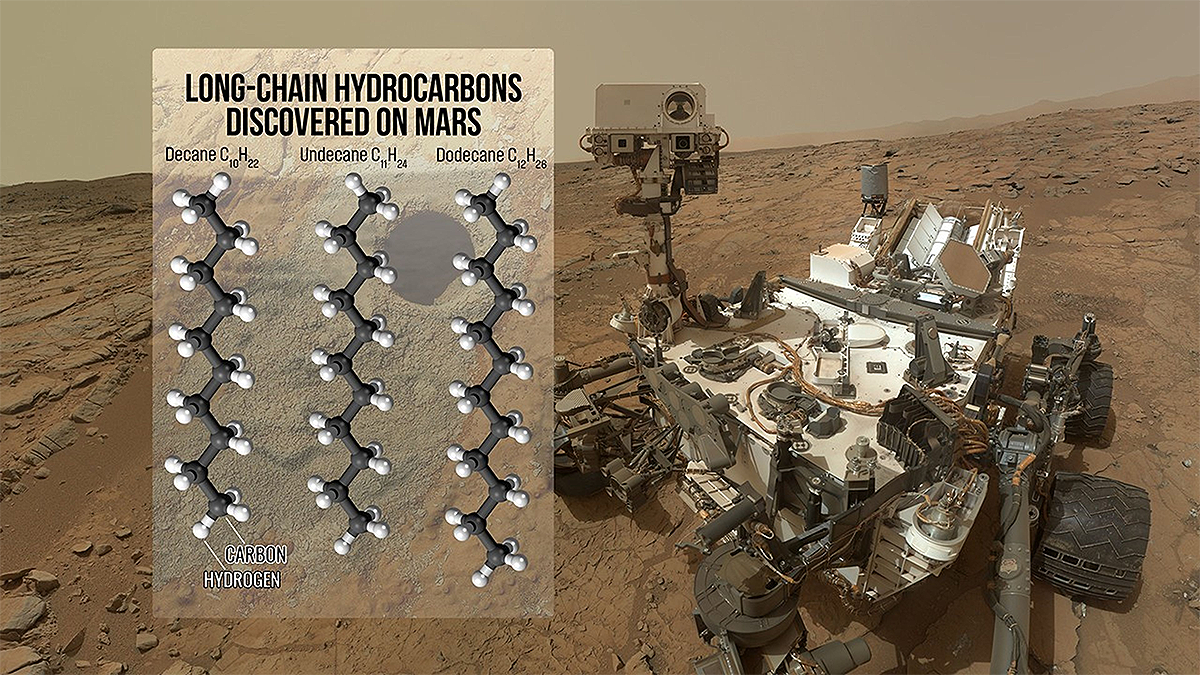25/03/2025
25/03/2025

LOS ANGELES, March 25, (Agencies): Researchers examining pulverized rock samples aboard NASA’s Curiosity rover have discovered the largest organic molecules ever found on Mars, according to a new study published on Monday. The findings suggest that prebiotic chemistry may have advanced further on Mars than previously observed, according to the study published in the Proceedings of the National Academy of Sciences. Scientists probed a rock sample inside Curiosity’s Sample Analysis at Mars (SAM) mini-lab and found the molecules decane, undecane, and dodecane.
These compounds, which are made up of 10, 11, and 12 carbons, respectively, are thought to be the fragments of fatty acids that were preserved in the sample. Fatty acids are key organic molecules on Earth that serve as chemical building blocks of life, according to NASA. While Curiosity’s previous discoveries included small, simple organic molecules, this new finding of larger compounds offers the first evidence that organic chemistry on Mars may have progressed toward the complexity necessary for the potential origin of life, NASA said. Launched on Nov. 26, 2011, Curiosity is the largest and most capable rover ever sent to Mars. It landed on Mars on Aug. 5, 2012.


